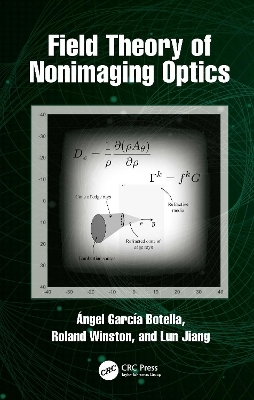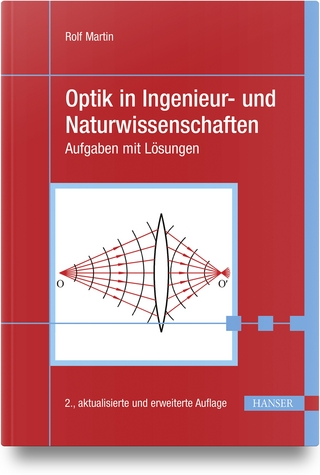
Field Theory of Nonimaging Optics
CRC Press (Verlag)
978-0-367-55163-6 (ISBN)
- Lieferbar (Termin unbekannt)
- Versandkostenfrei innerhalb Deutschlands
- Auch auf Rechnung
- Verfügbarkeit in der Filiale vor Ort prüfen
- Artikel merken
This book aims to overcome the traditional ray paradigm and provide an analytical paradigm for Nonimaging Optics based on Field Theory. As a second objective, the authors address the connections between this Field Theory of Nonimaging Optics and other radiative transfer theories.
The book introduces the Field Theory of Nonimaging Optics as a new analytical paradigm, not statistical, to analyze problems in the frame of nonimaging geometrical optics, with a formulation based on field theory of irradiance vector D. This new paradigm provides new principles and tools in the optical system design methods, complementary to flowline method, overcoming the classical ray paradigm. This new Field paradigm can be considered as a generalization of the ray paradigm and new accurate and faster computation algorithms will be developed. In a parallel way, the advance in the knowledge of the principles of Field Theory of Nonimaging Optics has produced clear advances in the connection between nonimaging optics and other apparently disconnected theories of radiation transfer. The irradiance vector D can be considered as the macroscopic average of Poynting vector, with a clear connection with radiation pressure. Lorentz geometry techniques can also be applied to study irradiance vector D. There are clear thermodynamic connections between the nonimaging concentrator and Stefan-Boltzmann law of radiation. From this thermodynamic connection, nonimaging optics and irradiance vector D can also be studied from a phase space point of view.
This book is intended for researchers, graduate students, academics and professionals looking to analyze, design and optimize optical systems.
Dr. Ángel García-Botella is a Professor of the E.T.S.I. at the Polytechnic University of Madrid. He received his degree in CC. Physics in 1995 from the University Complutense de Madrid and his doctorate in 2000. His research career focuses on the field of non-imaging optics, photometry, LED sources and vector theory of radiation transfer. He is the co-author of 30+ scientific publications, 1 book and is the co-inventor of 5 patents. Dr. Roland Winston is a leading figure in the field of nonimaging optics and its applications to solar energy. He is the inventor of the compound parabolic concentrator (CPC), used in solar energy, astronomy, and illumination. He is also a Guggenheim Fellow, a Franklin Institute medalist, past head of the University of Chicago Department of Physics, and a member of the founding faculty of University of California Merced, and he is currently the Director of UC Solar. Dr. Lun Jiang is a Research Scientist at UC Solar. His expertise is with vacuum devices, nonimaging optics and solar thermal and hybrid systems, solar cooling, and solar desalination. In his Ph.D. thesis he demonstrated two novel solar collectors that reach a working temperature above 200°C, without tracking. He led the receiver designing team for a vacuum hybrid receiver that generates both electricity and heat under 70x concentration, commissioned by Advance Research Project Agence-Energy (a segment of the U.S. Department Of Energy).
1. The Light Field and the Flowline Design Method 2. Flowline Method in Nonimaging Designs 3. Field Theory Elements 4. The irradiance vector in optical media 5. Thermodynamic basis of the irradiance vector 6. Phase Space in Nonimaging Optics 7. Appendix: The edge ray theorem 8. Bibliography
| Erscheinungsdatum | 16.05.2023 |
|---|---|
| Zusatzinfo | 120 Line drawings, black and white; 16 Halftones, black and white; 136 Illustrations, black and white |
| Verlagsort | London |
| Sprache | englisch |
| Maße | 156 x 234 mm |
| Themenwelt | Naturwissenschaften ► Physik / Astronomie ► Optik |
| Technik ► Elektrotechnik / Energietechnik | |
| ISBN-10 | 0-367-55163-2 / 0367551632 |
| ISBN-13 | 978-0-367-55163-6 / 9780367551636 |
| Zustand | Neuware |
| Informationen gemäß Produktsicherheitsverordnung (GPSR) | |
| Haben Sie eine Frage zum Produkt? |
aus dem Bereich


